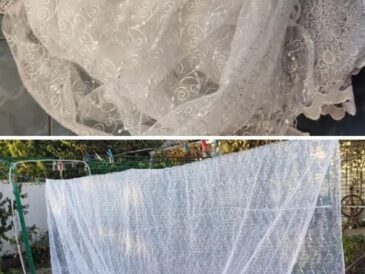Growing ginger at home is a rewarding and straightforward process that can provide you with a continuous supply of fresh, aromatic ginger. This guide will walk you through everything you need to know about cultivating ginger, from selecting the right ginger root to harvesting and storing your produce.
1. Why Grow Ginger at Home?
Ginger is a versatile ingredient known for its culinary and medicinal properties. Growing it at home allows you to enjoy fresh ginger whenever you need it, reduces your grocery bills, and ensures you have a pesticide-free supply. Plus, it’s a fun and engaging gardening project that doesn’t require a lot of space.
2. Choosing Ginger Rhizomes
The first step in growing ginger is to select the right rhizome (the part of the plant that grows underground). Here’s how to choose and prepare it:
- Source: Purchase fresh ginger rhizomes from a local nursery, health food store, or grocery store. Look for plump, firm rhizomes with visible buds or “eyes,” which will sprout new shoots.
- Preparation: Before planting, soak the rhizomes in water overnight to encourage sprouting. If the rhizome is large, you can cut it into smaller pieces, ensuring each piece has at least one bud.
3. Planting Ginger
Ginger can be grown in pots or directly in the garden. Here’s how to plant it:
- Container Planting:
- Pot Selection: Choose a wide, shallow pot with good drainage. Ginger has a spreading root system, so a pot with a diameter of at least 12 inches is ideal.
- Soil: Use a rich, well-draining potting mix. A combination of compost, loamy soil, and sand works well.
- Planting: Plant the rhizomes about 2 inches deep with the buds facing upwards. Space the rhizomes 6-8 inches apart.
- Watering: Keep the soil consistently moist but not waterlogged. Water the pot regularly, allowing excess water to drain.
- Garden Planting:
- Soil Preparation: Select a location with partial shade and well-drained soil. Work compost or aged manure into the soil to improve fertility.
- Planting: Plant rhizomes 2 inches deep with the buds facing upwards. Space them 6-8 inches apart in rows.
- Watering: Water the soil well after planting. Maintain consistent moisture throughout the growing season.
4. Caring for Ginger Plants
Ginger plants need minimal maintenance but do require attention to certain aspects:
- Light: Ginger prefers indirect sunlight. In containers, place them in a bright location with filtered light. In the garden, partial shade or dappled sunlight is ideal.
- Watering: Keep the soil consistently moist, especially during the growing season. Reduce watering in winter if the plant is indoors.
- Fertilizing: Feed the plants with a balanced fertilizer every 4-6 weeks during the growing season. Avoid over-fertilizing, as this can lead to excessive foliage at the expense of rhizome development.
- Pest and Disease Control: Ginger is relatively pest-resistant, but watch out for pests like spider mites and aphids. Use organic pest control methods if needed. Ensure good airflow around the plants to prevent fungal diseases.
5. Harvesting Ginger
TO CONTINUE READING THE ARTICLE PLEASE SEE PAGE 2




